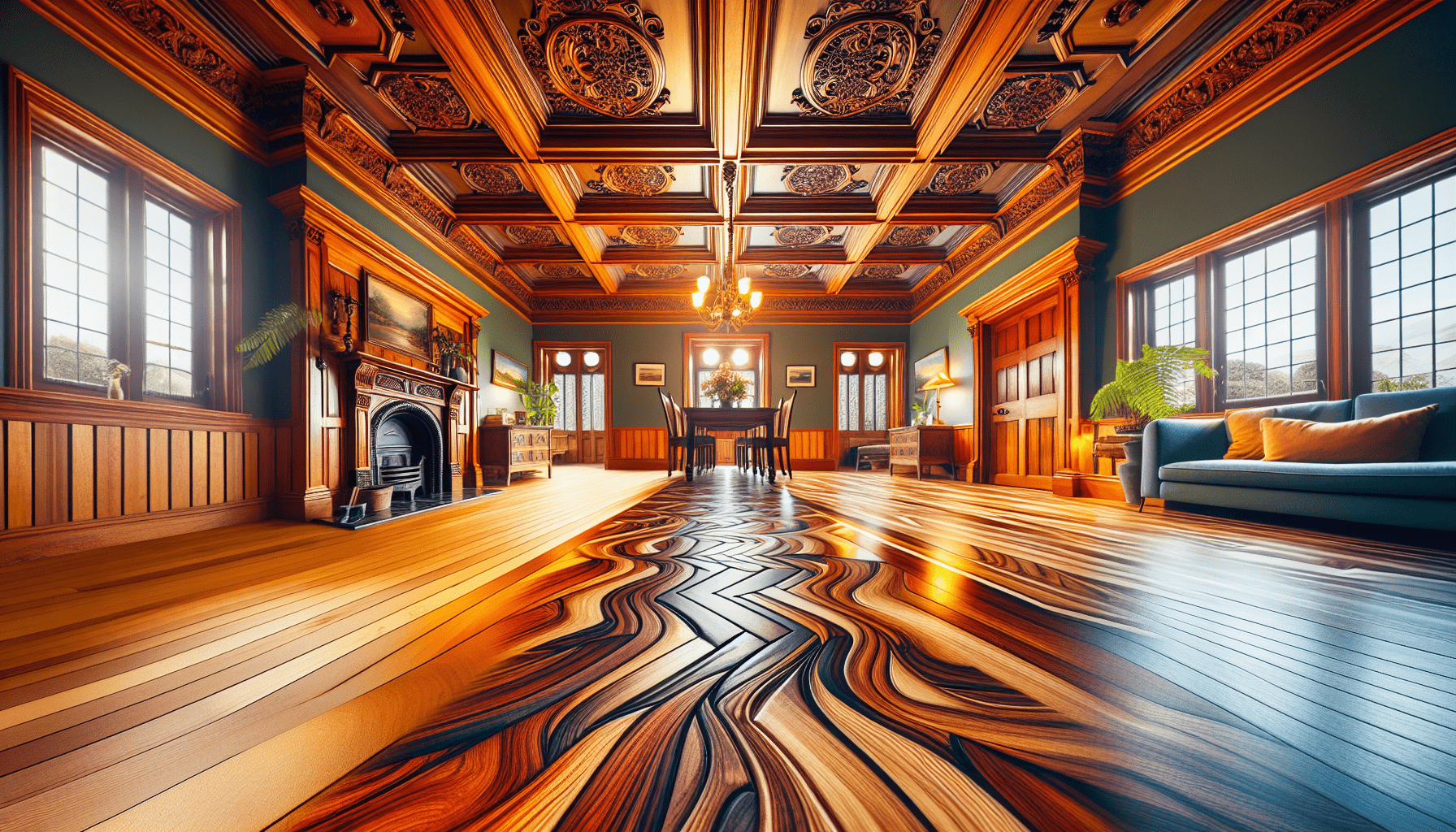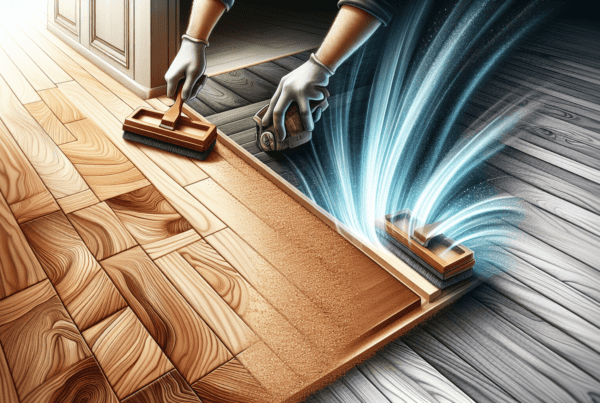Exploring the importance of maintaining the charm and integrity of our hardwood floors, we find ourselves turning to the experts in timber floor sanding and finishing in Wellington. This article shines a light on how custom solutions ensure our floors are not only rejuvenated but also reflect our unique style and the ambiance of our homes. With an emphasis on tailored approaches, the professionals in Wellington are dedicated to bringing out the best in our timber flooring, employing techniques that promise both durability and aesthetic appeal. Join us as we unveil the secrets to preserving the natural beauty of our floors through expert sanding and finishing.
Understanding Timber Floor Sanding and Finishing
When we embark on the journey to rejuvenate our timber floors, the processes of sanding and finishing stand out as pivotal stages. It’s through these meticulous applications that our floors can regain their lost luster, withstand the march of time, and continue to add warmth and charm to our homes.
The importance of sanding and finishing in floor maintenance
In the grand scheme of floor maintenance, sanding and finishing are not merely aesthetic choices, but essential acts of preservation. Sanding strips away any imperfections, old finish, and prepares the timber for the crucial finishing touch. Without this, our floors could deteriorate faster, losing their beauty and structural integrity. Finishing, then, acts as a protective shield, guarding against spills, scratches, and the daily wear and tear, all while enhancing the floor’s natural beauty.
Different types of timber floors and their characteristics
Our homes may boast a variety of timber floors, each with its unique set of characteristics. From the robust, deep hues of oak to the lighter, more subdued tones of pine, the type of wood not only dictates the aesthetic but also the sanding and finishing techniques to be employed. Hardwood floors, known for their durability, may require different preparation and finishes compared to softer woods, which are more prone to scratches and wear.
Overview of the sanding and finishing process
Sanding and finishing encompass a series of steps tailored to restore the allure of timber floors. Sanding typically involves multiple passes with varying grits of sandpaper, each finer than the last, to gradually smooth the wood surface. Finishing then applies a protective layer, such as lacquer, oil, or stain, to seal the timber and enhance its natural color. This calculated process not only revives the floor but also extends its lifespan.
Preparation for Sanding and Finishing
Before we dive into the task, preparing thoroughly ensures a smooth operation and stunning outcome.
Assessing the condition of the timber floor
Our first step is a thorough assessment, scrutinizing every inch of the floor for signs of damage, wear, and the existing finish. This critical examination helps us understand the extent of work needed and any specific challenges we may face, such as deep scratches or warping boards.
Necessary equipment and materials for sanding and finishing
Equipping ourselves with the right tools and materials is next. For a successful project, we’ll need a variety of sanders and sandpaper grits, along with the chosen finish. Additional supplies might include wood filler for repairs, a vacuum for cleanup, and appropriate safety gear to protect us during the process.
Safety measures and precautions
Safety cannot be overstated. We’ll don protective masks against dust, ear protection from the sanders’ roar, and ensure the work area is well-ventilated. These precautions protect not just our health but also the integrity of our project.
Choosing the Right Sanding Equipment
Selecting the correct tools can make all the difference in our flooring project.
Types of sanders suitable for timber floors
For the bulk of the sanding, belt sanders are our go-to, capable of removing old finishes and smoothing the wood efficiently. For edges and tight spaces, edge sanders and hand-held orbital sanders come into play, ensuring a uniformly sanded surface.
Determining the grit sequence for sanding
The journey from rough to smooth surfaces requires a strategic sequence of sandpaper grits. We’ll start with a coarser grit to remove the old finish and imperfections, gradually moving to finer grits for a smooth final surface. Each pass removes the scratches from the previous, finer grit ensuring a quality finish.
Benefits of professional grade equipment
While DIY is tempting, professional-grade equipment often yields superior results. These machines are designed for uniform sanding and come with dust collection systems, keeping the environment clean and reducing cleanup time. For us, investing in or renting these tools means a more efficient process and a better finish.
Step-by-Step Guide to Sanding Timber Floors
Initial floor preparation and cleaning
We begin by removing all furniture and ensuring a completely empty space. A thorough cleaning follows, removing dust, dirt, and grit that could harm the sanding process. Any protruding nails or screws are hammered down or removed to prevent damage to our sanders.
Sanding process: Start to finish
Starting with the coarser grit, we methodically sand the entire floor, ensuring even coverage. Subsequent passes with finer grits then refine the surface. We pay special attention to maintaining a constant movement to avoid uneven sanding marks or gouges in the timber.
Dealing with problem areas and repairs
Not uncommonly, we encounter problem areas requiring special attention. Deep scratches or damaged boards might need wood filler or even replacement. Addressing these issues before the final sanding passes ensures a seamless and restored surface, ready for finishing.
Selecting the Ideal Finish for Your Timber Floor
Comparison of finish types: Lacquers, oils, and stains
Our choice of finish impacts not just the floor’s appearance but its maintenance and durability. Lacquers create a hard, durable surface, oils penetrate deep to enhance the wood’s natural beauty, and stains offer a variety of tones and colors to match our décor.
Factors to consider when choosing a finish
We weigh our options based on aesthetics, the usage of the room, and our willingness to maintain the floor. High-traffic areas might benefit from the durability of lacquers, while living spaces could be enhanced with the natural look of oils.
Trends in timber floor finishes in Wellington
In Wellington, we’ve observed a preference for matte and satin finishes, offering a modern, understated elegance that complements a range of interior designs. Eco-friendly and low-VOC (volatile organic compounds) products are also gaining traction, reflecting our community’s growing environmental consciousness.
Application Techniques for Timber Floor Finishes
Best practices for applying different types of finishes
Each finish requires a specific approach. Lacquers, for instance, might need a roller or brush for application, whereas oils often require a cloth or pad to rub into the timber. Achieving an even coat and following the manufacturer’s drying times are key for a successful application.
Tools and techniques for a smooth application
Utilizing the right tools, such as high-quality brushes or rollers, ensures a smooth, streak-free finish. Keeping a wet edge and applying consistent pressure avoids lap marks, resulting in a professionally finished look.
Tips for achieving a professional-looking finish
Patience and attention to detail are our allies. Applying thin, even coats and allowing proper drying times between layers can make a significant difference. Sanding lightly between coats with a fine grit paper removes imperfections and enhances adhesion for the next layer.
Maintenance Tips for Sanded and Finished Floors
Routine maintenance to keep floors looking their best
Regular sweeping and vacuuming prevent dirt buildup that can scratch the surface. We recommend using cleaning products specified for the type of finish to avoid damage.
Preventive measures to avoid damage
Placing rugs in high-traffic areas, using furniture pads, and maintaining a stable indoor humidity level can significantly extend the life of our floors. Immediate clean-up of spills prevents water damage and staining.
How to deal with common floor issues
Scratches or dull spots might require spot treatment with a matching finish. For more severe damage, a professional re-sanding and finishing may be in order, restoring the floor’s beauty and integrity.
Custom Solutions for Unique Timber Floors
Dealing with heritage or special timber floors
Heritage or unique timber floors demand a tailored approach. We might employ specific sanding techniques or finishes that align with the floor’s historical period or unique characteristics, preserving its integrity while enhancing its beauty.
Bespoke sanding and finishing techniques
In Wellington, we’ve embraced techniques such as hand scraping or the use of specific finishes that offer a custom look or match the original aesthetic of special timber floors. Each project considers the wood’s age, condition, and desired outcome.
Case studies of tailored solutions in Wellington
We’ve witnessed remarkable transformations of Wellington timber floors, from aged, worn surfaces to breathtaking showcases of wood’s natural beauty. These case studies not only demonstrate the skill involved but also the personalized approach required for each unique floor.
Why Choose a Professional for Your Flooring Project
Benefits of hiring a professional floor sander
Engaging a professional guarantees a level of expertise and access to high-grade equipment that might not be otherwise available. Their experience allows them to anticipate and tackle any issues, ensuring a quality finish.
Cost versus quality: Finding the right balance
While DIY might seem cost-effective, the potential for costly mistakes and less-than-ideal outcomes is high. Professionals provide value through their craftsmanship, delivering a durable and beautiful floor that stands the test of time.
What to look for in a flooring specialist in Wellington
Choosing a professional with a robust portfolio, positive client feedback, and transparent pricing ensures confidence in our project. Specialists who keep abreast of the latest techniques and products can also offer insights into the most suitable solutions for our floors.
Conclusion: The Beauty and Benefits of Expertly Finished Timber Floors
As we reflect on our exploration of timber floor sanding and finishing, the journey underscores not just the aesthetic transformation but the profound impact on our home’s feel and durability. With the right preparation, tools, and care, our floors can become a testament to the beauty of natural wood, enhanced through skilled craftmanship. Investing in professional sanding and finishing not only preserves the integrity of our timber floors but also enriches our living spaces, inviting us to take pride in every step we take upon them.







